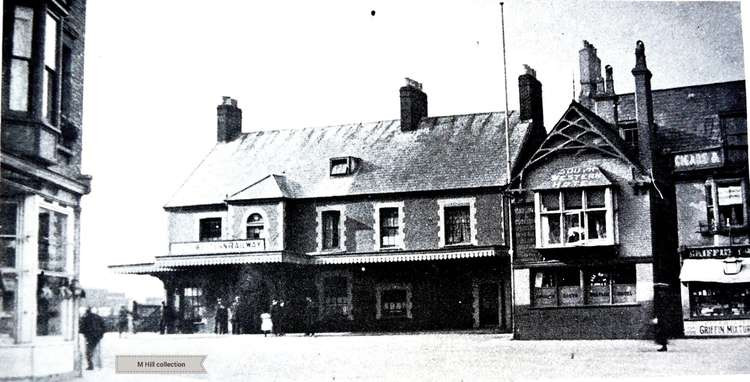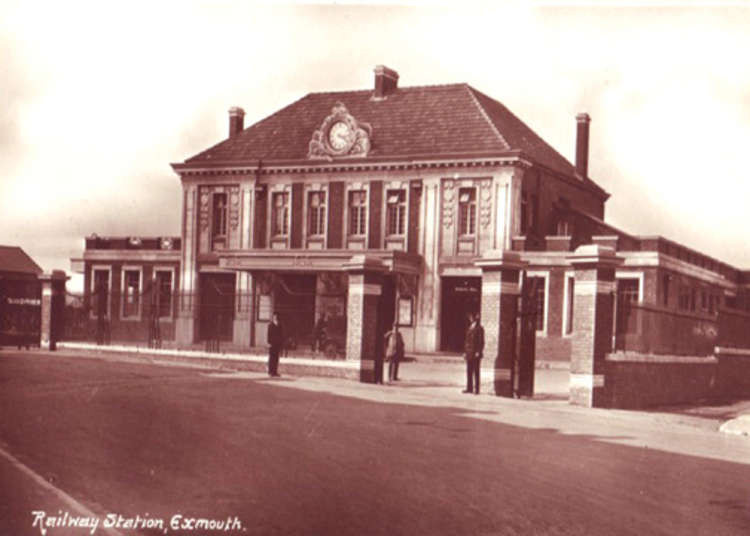Exmouth historian: The coming of the railway
By Mike Menhenitt 1st May 2022
By Mike Menhenitt 1st May 2022

For an aspiring seaside resort such as Exmouth the coming of the railway meant a new age of prosperity.
A railway was first mooted as early as 1842 but at the time there were two types of gauges for railway tracks, broad and narrow gauge and the proposed line got caught up in this battle. The Yeovil, Exeter & SW Company were up against Brunel's South Devon Company who wanted the broader gauge and had included in their scheme a viaduct over the Exe and the Canal. In 1854 an act was passed in favour of Brunel but due to lack of capital was never put into effect.
The newly formed Devon & Exeter Company made a proposal to build a line from Exeter to Topsham on condition that a company was formed to be called Exeter & Exmouth to raise the capital to complete the line to Exmouth.
Townsfolk found the necessary capital of £40,000 by issuing preference shares with a 5% dividend payable to shareholders. On 27 November 1856, the first sod was cut which was followed by a grand banquet for 500 people at The Market House followed by a ball in the evening at The Assembly Rooms – it must have been some celebration!
The railway opens

On 1 May 1861 the railway opened. There were eleven carriages conveying 550 people that left Exeter and the journey took 32 minutes. They were met by a procession and parade with marching bands. There followed a day of celebration with a banquet at The Globe Hotel. The station building was built by converting two houses. The final cost of the line was £83,000. There was also a line to the docks so that goods could be easily transported from there to Exeter and beyond.
In 1894, plans were laid to build a line from Exmouth to Budleigh and Tipton St John and the first train ran on Whit Monday in 1903.
Station building rebuilt

The station at Exmouth was rebuilt in 1897 and again in 1926 with a rather more imposing façade. There was also a rebuilt goods station. Meanwhile in 1903 Littleham became a station on 1 June with two curving platforms, a signal box that the author was occasionally allowed into and level crossing gates across what is now the start of Cranford Avenue.
The London & SW Railway built the line and ran trains beyond Budleigh to East Budleigh, Newton Poppleford, Tipton St John and Ottery St Mary. One changed at Tipton for the train to Sidmouth Junction where the main line from Waterloo to Exeter was met. The railway prospered, brought many visitors to the town and provided a convenient commuter system for locals and must surely have been one of the prettiest branch lines in the country.
The famous Beeching report on the future of the railways sounded the eventual death knell for the line however and trains ceased to operate from 6 March 1967. You can still walk or cycle the route of the railway beside Phear Park up to and beyond Littelham Cross right on to Budleigh.
At Littleham, the level crossing gates and signal box that the author used to revel in seeing operate as a child were eventually removed and the Salteron Road at Littleham Cross altered when the cutting was filled in. The current Jarvis Close runs right through what was the station and the old Station Masters House still survives as a private dwelling.
The line to Exeter is now called The Avocet Line and operated by GWR. The station buildings were demolished around 1980 when the new bus/railway station was built with the arrival of the new road in and out of the town.
There is now only one platform and a single track runs as far as Topsham when two tracks go on to Exeter Central. There is no doubt that all the character and atmosphere of the old staion completely disappeared with the demolition of it and the modern day one is soulless and unattractive in comparison.
If you would like to know more, a good starting point is the library on Exeter Road. There are many books in existence on all aspects of the history of Exmouth and these can often be found not only in good bookshops but also on line.
The Exmouth Museum staff are always happy to help and at the museum there is plenty of history to see and read about and a comprehensive library of newspaper cuttings relating to events and people in Exmouth. Please visit the Exmouth Museum website at exmouth museum.co.uk or contact [email protected].
—————
Ed: This is the seventh part of Mike Menhenitt's 'Walking Through Exmouth History' series. Use the links below to read previous articles:
Part One: The beginnings of Exmouth, from the Stone Age to the Bronze Age
Part Two: Exmouth in the Iron Age - and the arrival of the Celts
Part Three: Exmouth historian: Roman coins and Viking raids
Part Four: The impact of the Norman conquest, and how places in Exmouth got their names
Part Five: How Exmouth became a fashionable seaside resort in the 18th century
Part Six: How the docks brought prosperity to Exmouth - and then became the marina
CHECK OUT OUR Jobs Section HERE!
exmouth vacancies updated hourly!
Click here to see more: exmouth jobs
Share:




